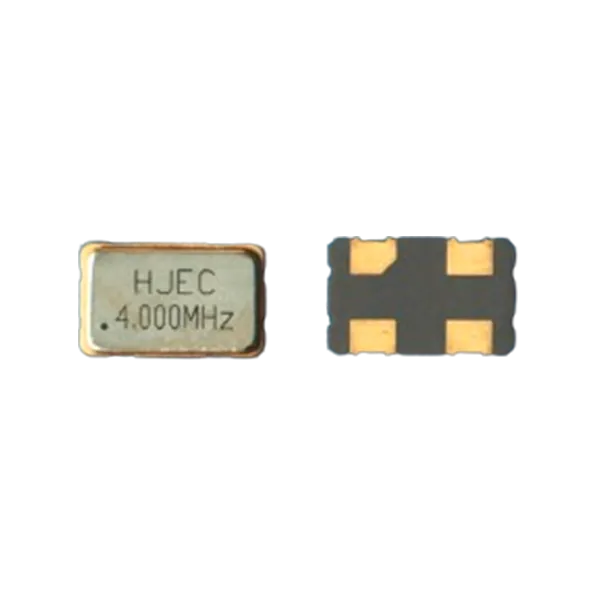Causes and Solutions for Crystal Oscillator Failures
Crystal oscillators are critical components in many electronic devices, providing precise timing and frequency control. However, several common issues can affect their performance. Here, we discuss these issues and their solutions to ensure optimal functionality.
1. Incorrect Material Parameters Leading to Oscillation Failure
Example: An MCU requiring a 32.768KHz crystal with a 6pF load capacitance is instead paired with a 12.5pF crystal, resulting in failure to oscillate.
Solution: Replace the crystal with one that meets the specified requirements. Consult the MCU manufacturer or our technical team for guidance if necessary.
2. Internal Crystal Chip Damage Leading to Oscillation Failure
Damage can occur during transport or handling, causing the internal crystal chip to break and prevent oscillation.
Solution: Replace the damaged crystal with a new one. During transport, use thicker foam padding to prevent damage. Avoid dropping, heavy pressure, and impacts during handling. If such events occur, do not use the crystal.
3. Mismatched Oscillation Circuit Leading to Oscillation Failure
Three key factors affecting the oscillation circuit are frequency error, negative resistance, and drive level.
● Frequency Error:
Excessive frequency error can cause deviation from the nominal frequency, leading to failure.
Solution: Select a product with the appropriate PPM (parts per million) value.
● Negative Resistance:
Both excessive and insufficient negative resistance can cause oscillation failure.
Solution: Adjust the values of external capacitors CdCd and CgCg to modify the negative resistance. Typically, the negative resistance should be 3-5 times the crystal's nominal maximum resistance.
● Drive Level:
Incorrect drive level can also cause failure.
Solution: Adjust the size of RdRd in the circuit to regulate the drive level. A lower drive level is generally better for low power consumption, circuit stability, and crystal longevity.
4. Common Crystal Oscillator Anomalies
1. Intermittent Oscillation:
a. Mismatched load capacitance causes significant frequency deviation.
b. Issues with the crystal itself, such as parasitic impedance fluctuations or loose internal welds.
2. Oscillation Failure on PCB Installation:
Sometimes, applying heat or reinstalling the crystal temporarily resolves the issue, indicating a mismatch in load capacitance.
3. Capacitance Matching:
Properly matching the crystal load capacitance to the circuit is crucial for stable operation.
Formula:
Here, CL is the crystal load capacitance, C1 and C2 are the capacitors on either side of the crystal, and C′′ is the stray capacitance of the circuit.
4. 32768Hz Crystal Time Deviation:
Time deviation is mainly due to frequency errors. A 1PPM frequency deviation results in a time error of 0.0864 seconds per day.
Solution: Use properly matched capacitors and request zero-error PPM values from your supplier for precise timekeeping.
5. Soldering Issues:
a. Avoid soldering the crystal housing to the PCB, as prolonged heat can melt internal welds and cause short circuits.
b. When bending leads, use appropriate tools and techniques to avoid damaging the crystal.
6. Ultrasonic Cleaning:
Ultrasonic cleaning can damage the internal structure of the crystal oscillator.
7. Prolonged Oscillation Start Time:
High resistance can cause long start times and increased power consumption.
Solution: Use crystals with lower resistance to ensure reliable startup, especially at low voltages.
By addressing these common issues and following the recommended solutions, you can ensure the reliable performance of your crystal oscillators in various applications. For further assistance, feel free to contact our technical support team.
Previous post
The Role of Quartz Crystal Oscillators in 5G Networks-
Are you a manufacturer or a trading company?Thangshan Huixun is a manufacturer of crystal oscillators, Our factory is located in Tangshan city Hebei province, China. Welcome to visit us.
-
How long is your delivery time?Delivery time for customized orders will be 2-4 weeks. 24 hours will be shipped out if in stock.
-
Do you offer samples? Is it free or not?Small quantity free samples are able to be offered and shipping cost should be paid by customer.
-
What basic information to provide when ordering a crystal?We typically ask customers to provide the center frequency, the cutting angle type (AT or BT), the holder or package type, the equivalent series resistance (ESR), frequency tolerance, stability, load capacitance, operating temperature range, drive power, aging characteristics, and any additional requirements for OEM customizations.
-
Do you have any certificationWe have certification ISO9001, IATF16949.
-
Do you accept OEM and ODM order?Yes, warmly welcome OEM or ODM order, we are able to provide OEM services for customers
Reach Out to Us Today!


